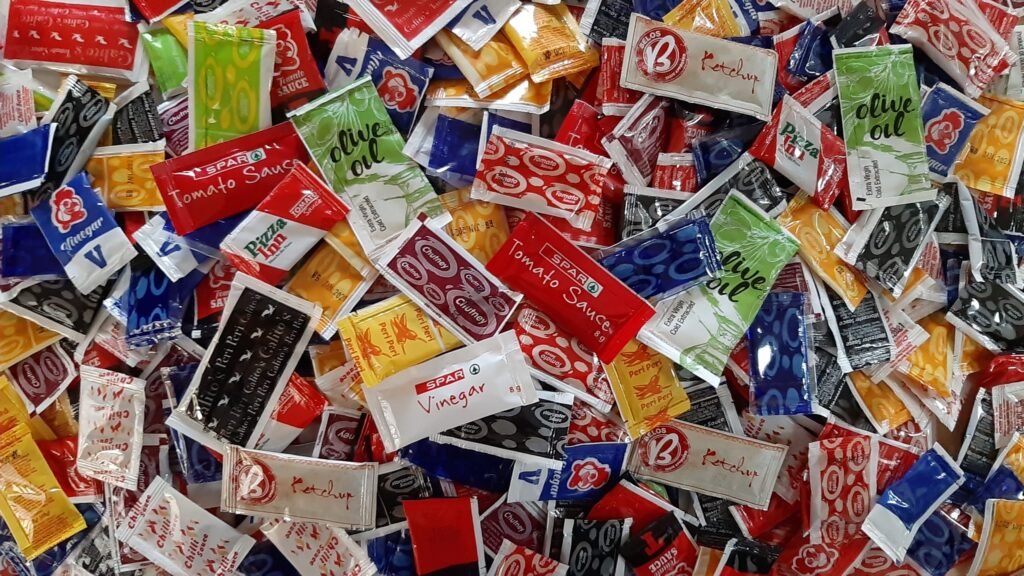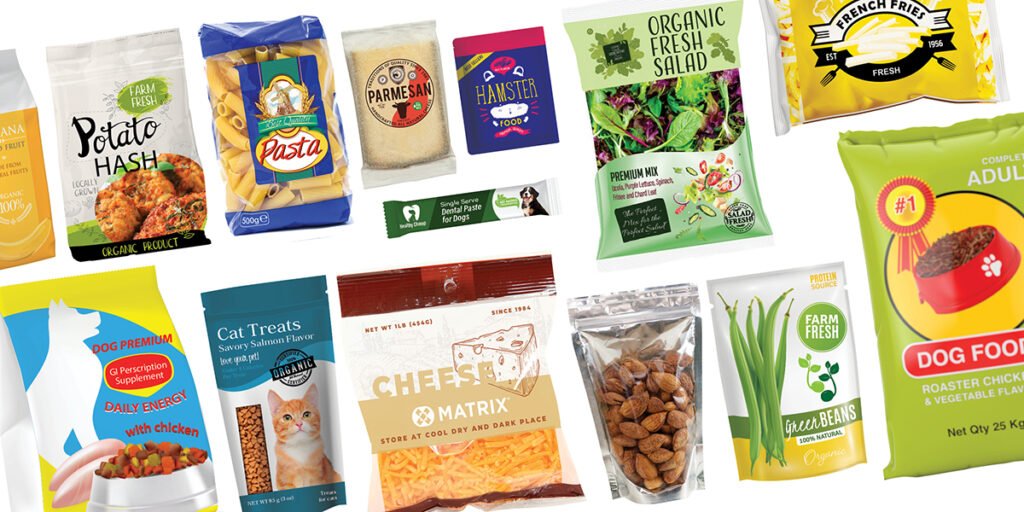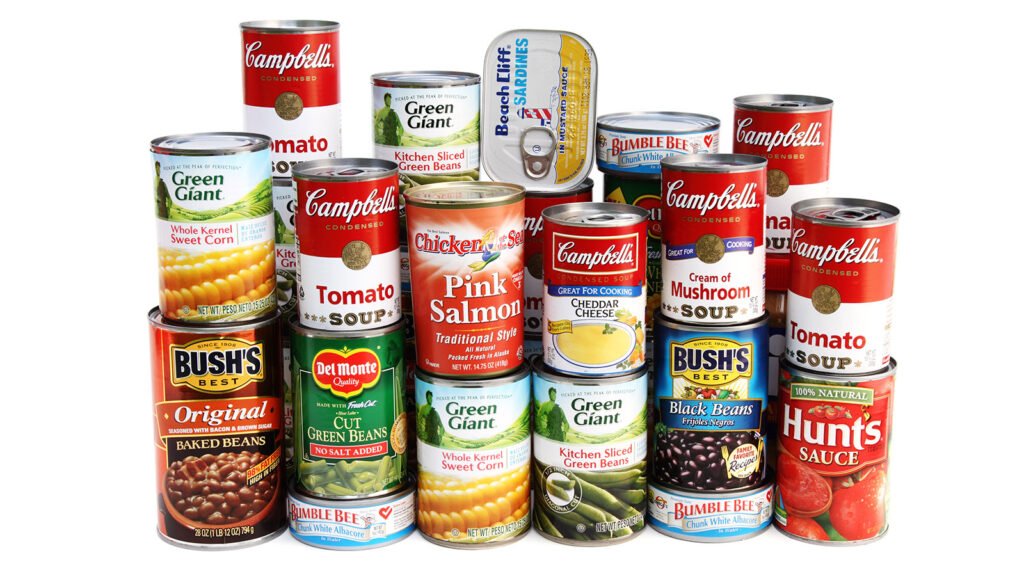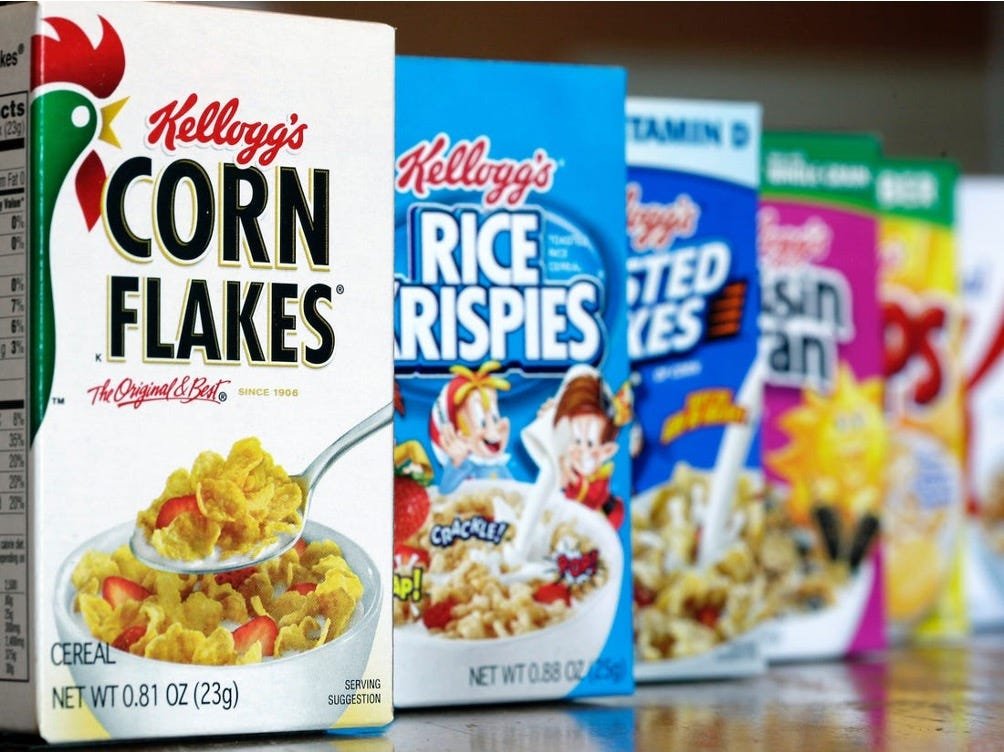Walk into any grocery store today, and you’ll see countless packaging styles: bottles, cans, boxes, and pouches. For manufacturers, the type of packaging is a key to a product success, and it comes before the package design. Let’s check out 3 common food and beverage packaging in the world of retail.
1. Plastic Packaging
The No.1 popular food & beverage packaging is plastic, such as sachets, pouches, packets, and bottles, cups, tubes etc. Examples include coffee in sachets, chips in packets, snacks in zipper bag, yogurt in cups, beverage in bottles, sauce in tubes. In the world of packaging, plastic dominates the industry by claiming roughly 40% of all materials used. We expect the market for plastic packaging to reach nearly 120 million tons by the year of 2028. (Huong, N. (2023, December 4). How much plastic does food packaging use? KimEcopak. https://www.kimecopak.ca/blogs/news/how-much-plastic-does-food-packaging-use?srsltid=AfmBOooZ0L2HR-ePnuNSVAKUts0xxWKY4JvlDhDABep8upVx4W1_PVis)

Due to its light-weight feature, plastic package gives advantages on product portability for consumers, and benefits on logistics for manufacturers. For example, mouthwash was usually filled in bottles for home-use mainly. In recent years the bottle package starts to turn to portable sachets, for people to use when they are on trip, meeting needs of various consumer groups. Compared with glass bottle, water/beverage in plastic bottles is easier to carry and transport. Therefore instead of glass container, plastic bottle is the main packaging for water.
For manufacturers, plastic package is also an economic-effective option to go. As plastic package lowers package&shipping cost, increases the price competitiveness of products, making the products more affordable to the public and thus eventually boosting sales. In the wholesale market, a 500ml plastic bottle costs around 0.2USD while a similar 500ml glass bottle costs around 0.35USD. A tiny 0.15USD difference can lead to a greater amount difference once the quantity goes up. Other edges of applying plastic package include production versatility and flexibility. Plastic can be easily made into different shapes and designs, allowing manufacturers to quickly create or change package to react to the current fast-changing market.

2. Metal Packaging
Typical metal packaging includes cans and tins. Examples would be canned food and beverage such as spam, pet food, alcohol, drinks, and aerosol cans for whipped cream, olive oil etc.
The metal material like aluminum, steel and tinplate, which is robust and durable enough to withstand rough handling. Also making the transportation and storage process effortlessly. In terms of product protection, cans and tins packaging ace in food quality and freshness preservation, keeping food impermeable to light, moisture and oxygen. And thus extending food shelf-life.

3. Cardboard Packaging
Boxes and cartons are the two most commonly-seen packaging for cardboard package. There are boxes for milk, juice, beverage, condiments, snacks, cereals etc. Box is sometime served as a secondary packaging. For example a box of 12 packets of coffee packs, or a box of a bagged cereal.
One of the purposes of using boxes package is to add extra layer of protection over fragile plastic wrap. It is to further enhance the package durability, to keep products away from physical damage and maintain product quality. Another benefit of boxes packaging is to make products stack-able, optimizing storage and transportation.
Paper-based boxes and cartons are options for environmental-friendly packaging. As they are recyclable and biodegradable, aligning with consumer demand for sustainable and eco-friendly packaging.

